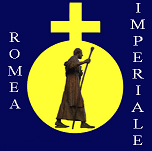Stage 20
Pistoia-Prato
From Pistoia the landscape and the hiking effort totally change: we leave the Apennines with its arduous gradients and predominantly naturalistic emergencies, and from now on we will have easy hills all the way to Arezzo, dotted with historical monuments, a mirror of the centuries in which Tuscany exerted its cultural and economic influence throughout the world. Starting from the church dedicated to the VIA’s patron saint, St. Bartholomew, we leave the historic center in an east-southeast direction, and cross a vast suburb for a few miles, until we take small roads among the fields and nurseries that characterize Pistoia’s economy. Renaissance villas can be glimpsed on the nearby hills, until we reach the first center of some importance: Montale. After the adjoining town of Montemurlo, a mid-mountain “hiking” section begins, climbing up to climb over a small ridge. Descending again into the valley, one encounters the parish church of San Pietro, in Figline, a real jewel with walls covered in beautiful frescoes; unfortunately, however, it is not always open. The next section is a comfortable bicycle and pedestrian path alongside the right bank of the Bisenzio River, which takes us to the center of Prato.The city is very ancient, and just outside the walls are excavations from the Etruscan period at Gonfienti. The historic center is absolutely worth visiting carefully. Alongside medieval (especially the castle of Emperor Frederick II, the “Stupor mundi”) and Renaissance monuments (the Duomo, with its pulpit by Donatello), one can admire examples of skillfully repurposed modern archaeology: many former textile industry factories recovered to new uses, especially cultural ones. Pilgrims also have an important reason to pay attention: the Cathedral houses the precious relic of the Sacred Girdle.
Distance : 26,4 Km
Time : 7,5 hours
Terrain: two historic centers, trails, country roads
Height difference + : 660 m
Height difference – : 671 m
Max altitude : 309 m
Min altitude : 56 m
